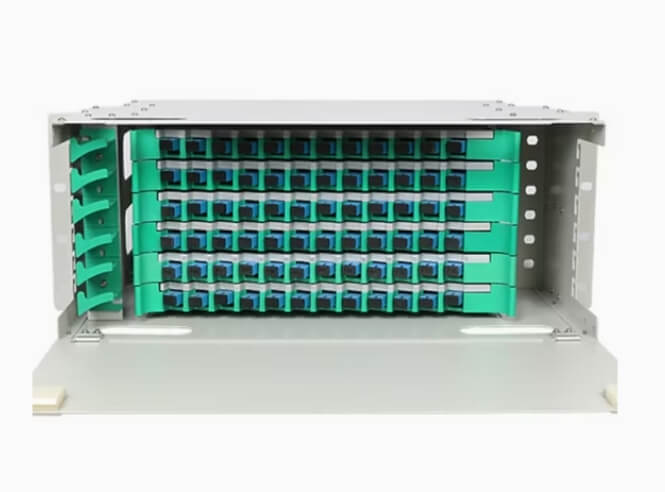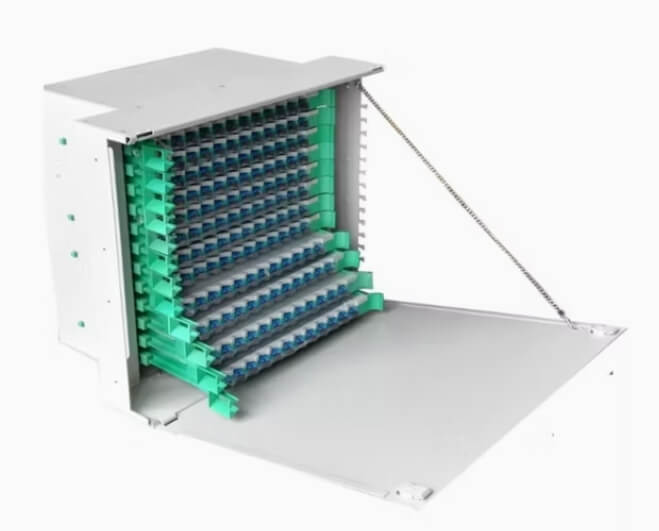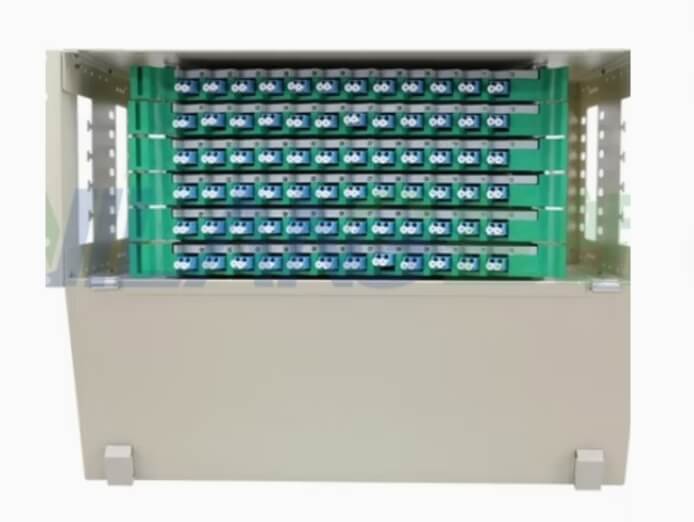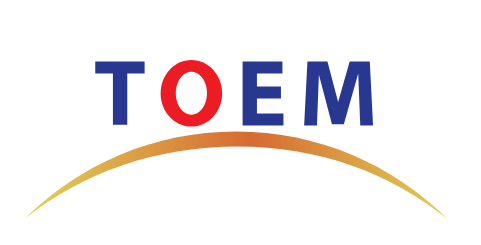Shanghai Gengyun Industrial Co., Ltd
What is ODF Optical Distribution Frame in Telecommunications Networks?
Optical distribution frame (ODF) are an integral part of optical communication networks. They provide efficient fiber management, connectivity, and protection.
1.What is ODF

Fiber optic distribution frame (ODF) are an essential component of telecommunication communication networks. It plays a vital role in effectively managing and connecting optical cables.
ODF acts as a central point for activities such as connecting, splicing, and distributing optical signals, and their main purpose is to ensure proper fiber management, protection, and easy maintenance. The basic functions of ODF vary little from manufacturer to manufacturer. However, there are also some details required for customization.
2.Types of ODF Fiber Distribution Frame

From the perspective of type, ODF comes in various forms to meet the diverse needs of different networks
Rack-mounted ODFs are commonly used in data centers and telecommunications exchanges. They have sliding trays or modules that enable efficient fiber cabling splicing and patching.
This configuration optimizes the utilization of rack space. On the other hand, wall-mounted ODFs are more suitable for small applications such as offices or residential buildings.
They provide compact and easy-to-connect fiber termination points for indoor and outdoor optical cables
3.The difference between ODF and patch panels
It is important to distinguish between ODF (overview) and patch panels because they have different functions in fiber management. While managing fiber connections, ODF provides a more comprehensive approach
ODF is used as an enclosure, which facilitates not only fiber termination points, but also fiber splicing, distribution, and overall fiber management. Patch panels, on the other hand, are simpler units that are mainly used to terminate individual fiber connections. In practice, patch panels are often used in conjunction with ODFs to create a more organized and flexible fiber management system.
4.Features of Fiber Distribution Frame

ODF possesses several key features that enhance its functionality. They organize optical fibers, connectors, and related equipment in a structured manner, ensuring proper fiber management and protection. ODF also serves as the central connection point for optical fibers, facilitating seamless transmission of optical signals within the network.
ODFs are designed for easy access, making maintenance, troubleshooting, and upgrades more convenient and efficient. Moreover, they are scalable and can accommodate future network expansion by providing options for higher port density and supporting the growing number of fibers in modern networks.
Although similar to patch panels, ODFs offer more comprehensive features
They have fiber organization, connectivity, splicing and distribution capabilities, a well-connected transportation network, and scalability to meet the changing needs of optical communication networks.
5.How to choose ODF based on your needs
Choosing the right fiber optic patch panel (ODF) involves considering several factors beyond the structure. Here are some key aspects to guide your selection:
(1) Fiber count
As data centers grow, the demand for high-density ODFs increases, and common configurations include 24, 48, and even 144 ports. Many vendors offer customized optical distribution frame to meet specific needs
(2) Manageability
While high density is advantageous, it can complicate management. ODFs should facilitate easy access to connectors at the front and rear for smooth insertion and removal. Sufficient space is essential, and the adapter color should be consistent with the fiber connector color code to prevent errors.
(3) Flexibility
The modular design of rack-mount ODFs provides flexibility, and port sizes also enhance flexibility. For example, duplex LC port sizes can accommodate duplex LC, SC, or MRTJ adapters, while ST port sizes can accommodate both ST and FC adapters
(4) Protection
ODFs integrate sensitive fiber connections, such as splices and connectors, which are critical to network stability and reliability. Quality ODFs should include dust and crush protection measures to protect these connections.
